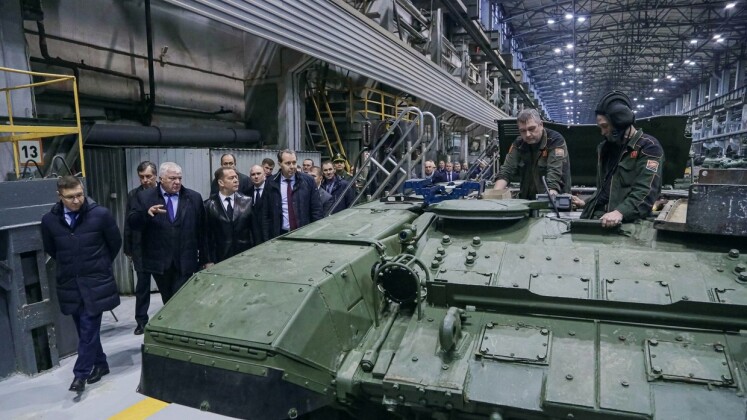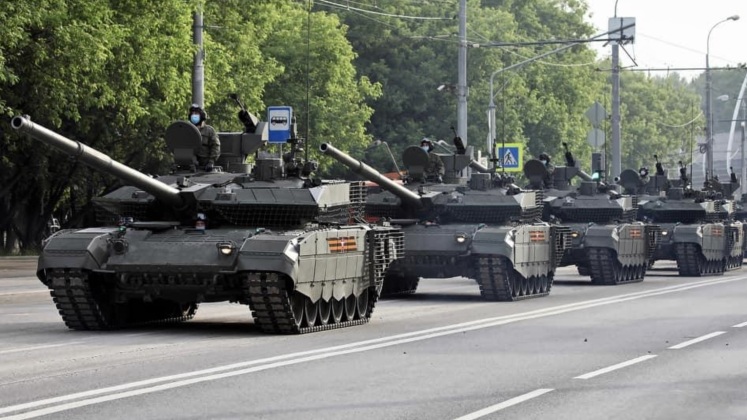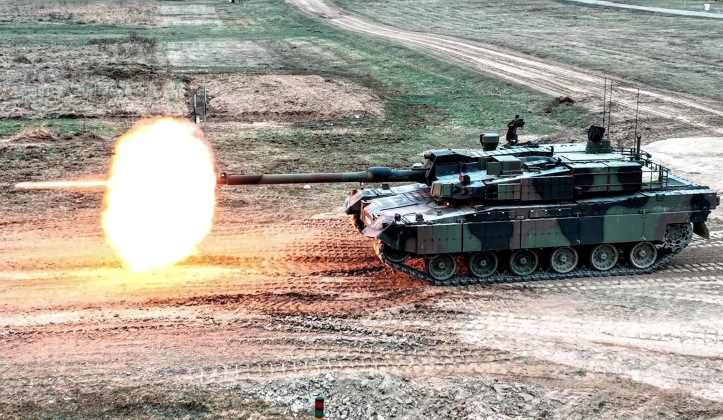News
Russian Presidents Putin and Medvedev Both Claim the T-90M is the World’s Best Tank: Are They Right?
Following reports of significant battlefield successes in Ukraine, the Russian T-90M ‘Breakthrough’ main battle tank has been praised by President Vladimir Putin as the world’s leading combat vehicle of its kind. “Modern anti-tank warfare systems are needed. Modern tanks are also needed. It can be said today that the T-90M Proryv [‘Breakthrough’] is the world’s best tank. As soon as it approaches positions, no chance is left for anyone or anything. It fires to a longer range and more accurately. It also has better protection,” he stated. As an example the president cited a report regarding the T-90M’s durability when hitting a roadside bomb, presumably in Ukraine, stating: “It simply apparently jumped up and a man inside was injured not by the shell but because he simply bumped pretty hard. The tank remained intact.” Putin was far from the first figure in the Russian leadership to heap praise on the T-90M tank, with former president and Deputy Chairman Russian Security Council Dmitry Medvedev stating in March: “In my opinion, this [T-90M tank] is now the best tank in the world … It is certainly better than Leopard, Challenger, Abrams [tanks], including in terms of its tactical and technical data, even in terms of such a component as mass.”

The T-90M entered service in the Russian Army in April 2020, two months after completing state trials, and while the Russian Army was set to purchase only a few dozen units from production lines, the escalation of war in Ukraine in February has resulted in an expansion of planned acquisitions to thousands of vehicles. Planned production rates are estimated at over 1300 per year, alongside small numbers of more modern T-14 tanks which have yet to officially be commissioned into the Russian Army. This has allowed the tank to increasingly form the backbone of the Russian fleet, with its armour production configuration having also been used in late 2022 to provide an upgrade package for older T-72 tanks – which is speculated to be called the T-72B4 model. The T-90M’s notable features include a strong base armour, very wide coverage using Relikt explosive reactive armour, cutting edge fire controls and thermal sights, and an independent thermal viewer and digital display for the commander – a notable shortcoming of previous Russian tank designs. The tank’s firepower also improved significantly on its predecessors, with a new autoloader and main gun allowing it to integrate longer APFSDS rounds with a much greater penetrative capability against enemy armour. Separation of ammunition and crew through new protection for the tank’s autoloader carousel also significantly increases survivability – as demonstrated by the lack of internal explosions seen on T-90Ms that have been hit in Ukraine.

The T-90M’s firepower, sensors and armour protection place it in a different league compared to other tanks in the Russian arsenal, and have been widely seen to comfortably surpass the capabilities of rival tanks produced in the Western world. A distinct advantage of the T-90M is that it is only around two thirds the size of Western tanks, which can weigh 70-80 tons for up-armoured American and German vehicles, with lower fuel consumption and maintenance needs, and much greater ease of transport, being notable advantages. While presenting a much smaller target to enemy gunners, the tank’s size also optimises it to using roads and bridges built for civilian vehicles which few Western tanks can. The tank also benefits from reduced crew requirements at just three personnel, where German, American and British tanks require four, due to the use of an autoloader. This also facilitates a higher rate of fire. Although the T-90M has notable advantages over Western vehicles, however, its standing is less strong when compared to the latest Chinese and South Korea tanks such as their respective Type 99A and K2 Black Panther.

The capabilities of the K2 have become increasingly relevant to Russian security interests as NATO members Poland and Turkey each plan to field close to 1000 of the Korean supplied tanks, which are not only much more capable but can also be delivered much faster than Western vehicles. The K2 was developed in part based on Korean experience operating Russian T-80U and T-80UK tanks acquired in the 1990s, which were at the time the most capable in Russian service. K2s benefit from snorkel capabilities, autoloaders and three man crews, which were distinguishing features of Soviet and Russian designs. Much like T-90s they are relatively light, require little maintenance and can operate on civilian roads and bridges. Although its APFSDS rounds are considered less capable than those on the T-90, K2s have a number of advantages including integration of unique very long ranged parachute rounds and use of radars for greater situational awareness. The Korean tank’s cost, however, is 3-4 times higher than that of the T-90M, and with a much smaller scale of production, by the time they are deployed in significant numbers in Europe they are expected to be faced by the next generation T-14s despite the serious delays Russia has faced operationalising them.
Ultimately which tank is the ‘best’ depends largely on the mission at hand, with simpler vehicles including modernised T-55s still widely favoured for counterinsurgency operations, while vehicles like North Korea’s Pokpung Ho and China’s Type 15 are considered optimal for war in mountainous terrain. The T-90M strikes a balance between anti personnel capabilities, anti armour capabilities, mobility, transportability, protection and a small logistics footprint. This makes it a leading contender for the title of a ‘best’ tank for all scenarios – even if not a clear and absolute winner as Russian leaders have implied.












